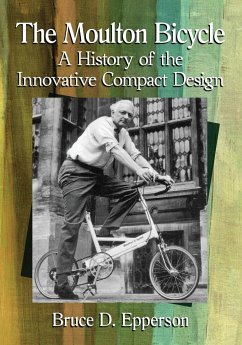
Early Bicycles and the Quest for Speed
A History, 1868-1903, 2d ed.
Versandkostenfrei!
Versandfertig in 1-2 Wochen
43,99 €
inkl. MwSt.

PAYBACK Punkte
22 °P sammeln!
From the earliest "velocipedes" through the advent of the pneumatic tire to the rise of modern road and track competition, this history of the sport of bicycle racing traces its role in the development of bicycle technology between 1868 and 1903. Providing detailed technical information along with biographies of racers and other important personalities, the book explores this thirty-year period of early bicycle history as the social and technical precursor to later developments in the motorcycle and automobile industries.













